| CPC H10K 85/631 (2023.02) [H10K 85/626 (2023.02); H10K 85/654 (2023.02); H10K 50/11 (2023.02); H10K 50/15 (2023.02); H10K 50/16 (2023.02); H10K 50/19 (2023.02); H10K 2101/10 (2023.02); H10K 2101/30 (2023.02)] | 15 Claims |
|
1. An organic light-emitting device comprising:
a first electrode;
a second electrode facing the first electrode;
light-emitting units in a number of m between the first electrode and the second electrode; and
charge generation layers in a number of m−1 respectively between each pair of adjacent light-emitting units among the light-emitting units in the number of m, each charge generation layer comprising an n-type charge generation layer and a p-type charge generation layer,
wherein m is an integer of 3 or more,
the light-emitting units in the number of m each comprise a hole transport region, an emission layer, and an electron transport region, which are sequentially stacked,
the electron transport regions in a number of m comprised in the light-emitting units in the number of m each comprise an electron transport material, and
the electron transport materials in a number of m comprised in the electron transport regions in the number of m are each independently selected from a first compound, a second compound, and a third compound, and
the first compound is selected from Compounds 1 to 17, the second compound is selected from Compounds 101 to 120, and the third compound is represented by Formula 3:
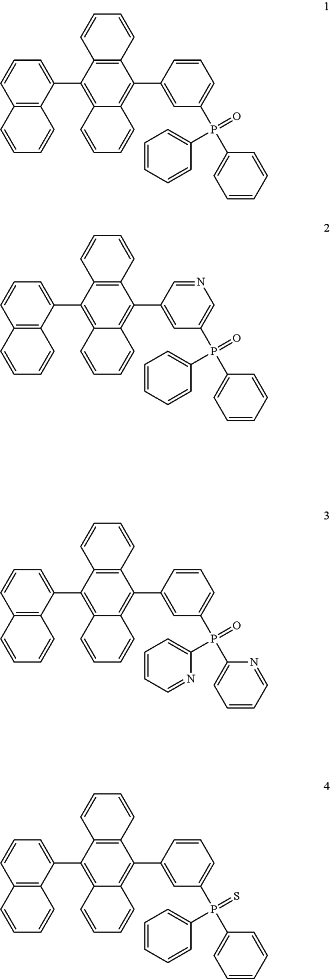 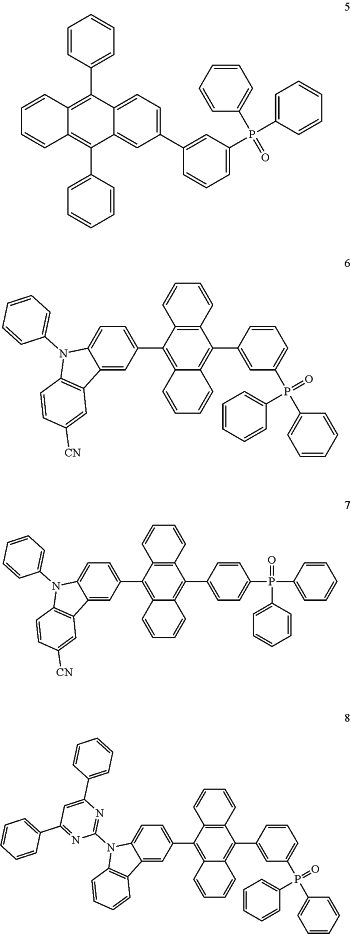 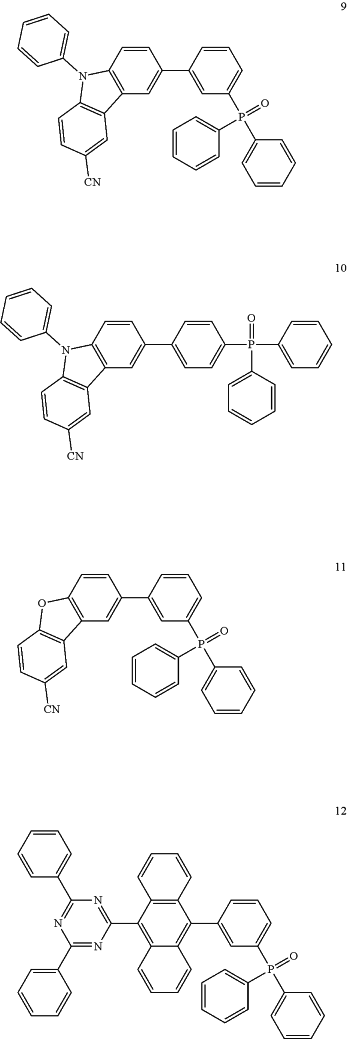  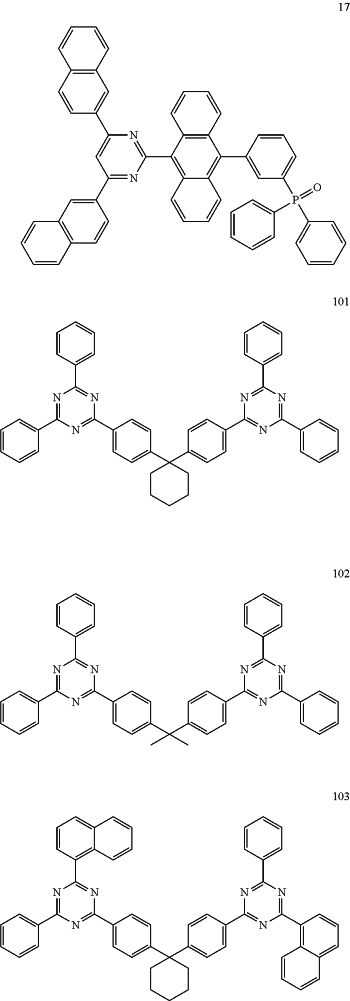 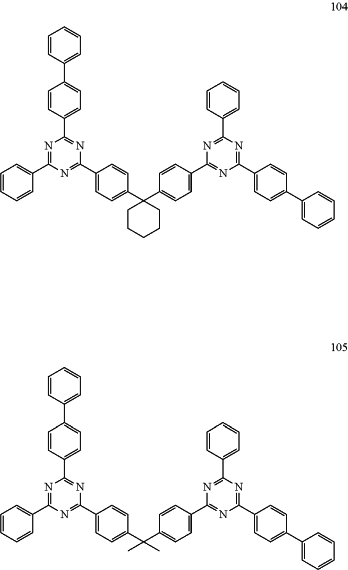  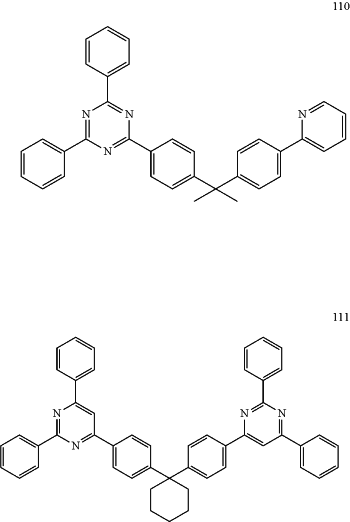 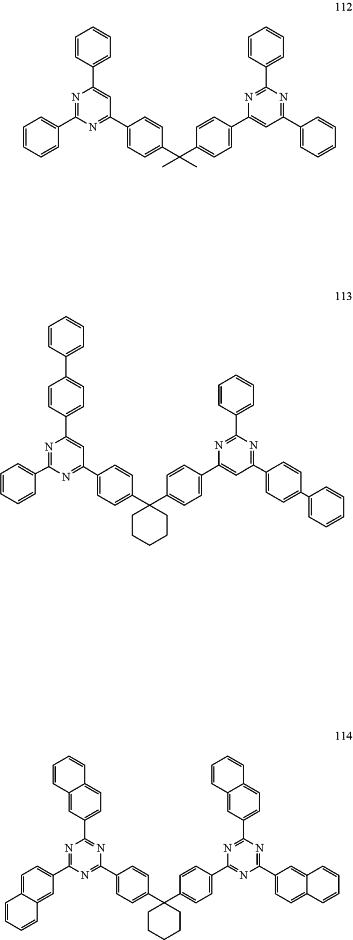 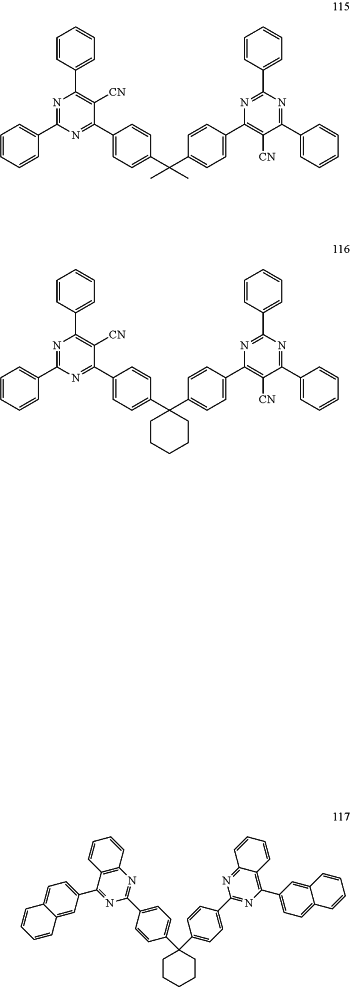 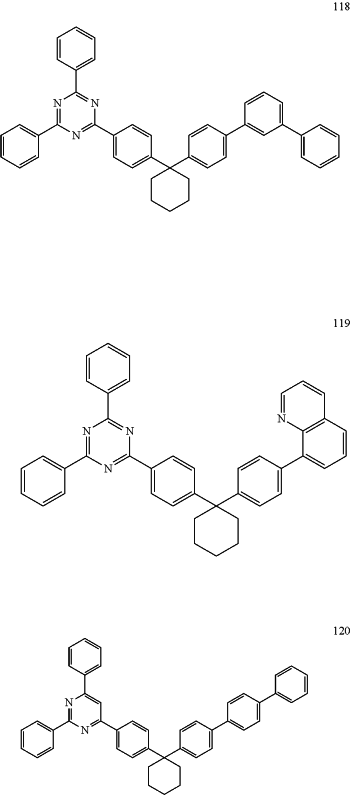  and
wherein in Formula 3,
A21 is a π electron-depleted nitrogen-containing ring,
L21 is a substituted or unsubstituted C5-C60 carbocyclic group or a substituted or unsubstituted C1-C60 heterocyclic group,
a21 is an integer selected from 0 to 5,
Ar21 is a substituted or unsubstituted C5-C60 carbocyclic group or a substituted or unsubstituted C1-C60 heterocyclic group,
b21 is an integer selected from 1 to 5,
c21 is an integer selected from 0 to 20,
at least one substituent selected from the substituted C5-C60 carbocyclic group and the substituted C1-C60 heterocyclic group is selected from:
deuterium, —F, —Cl, —Br, —I, a hydroxyl group, a cyano group, a nitro group, an amidino group, a hydrazino group, a hydrazono group, a C1-C60 alkyl group, a C2-C60 alkenyl group, a C2-C60 alkynyl group, and a C1-C60 alkoxy group;
a C1-C60 alkyl group, a C2-C60 alkenyl group, a C2-C60 alkynyl group, and a C1-C60 alkoxy group, each substituted with at least one selected from deuterium, —F, —Cl, —Br, —I, a hydroxyl group, a cyano group, a nitro group, an amidino group, a hydrazino group, a hydrazono group, a C3-C10 cycloalkyl group, a C1-C10 heterocycloalkyl group, a C3-C10 cycloalkenyl group, a C1-C10 heterocycloalkenyl group, a C6-C60 aryl group, a C6-C60 aryloxy group, a C6-C60 arylthio group, a C1-C60 heteroaryl group, a monovalent non-aromatic condensed polycyclic group, a monovalent non-aromatic condensed heteropolycyclic group, —Si(Q11)(Q12)(Q13), —B(Q11)(Q12), —C(═O)(Q11), —S(═O)2(Q11), and —P(═O)(Q11)(Q12);
a C3-C10 cycloalkyl group, a C1-C10 heterocycloalkyl group, a C3-C10 cycloalkenyl group, a C1-C10 heterocycloalkenyl group, a C6-C60 aryl group, a C6-C60 aryloxy group, a C6-C60 arylthio group, a C1-C60 heteroaryl group, a monovalent non-aromatic condensed polycyclic group, a monovalent non-aromatic condensed heteropolycyclic group, a biphenyl group, and a terphenyl group;
a C3-C10 cycloalkyl group, a C1-C10 heterocycloalkyl group, a C3-C10 cycloalkenyl group, a C1-C10 heterocycloalkenyl group, a C6-C60 aryl group, a C6-C60 aryloxy group, a C6-C60 arylthio group, a C1-C60 heteroaryl group, a monovalent non-aromatic condensed polycyclic group, a monovalent non-aromatic condensed heteropolycyclic group, a biphenyl group, and a terphenyl group, each substituted with at least one selected from deuterium, —F, —Cl, —Br, —I, a hydroxyl group, a cyano group, a nitro group, an amidino group, a hydrazino group, a hydrazono group, a C1-C60 alkyl group, a C2-C60 alkenyl group, a C2-C60 alkynyl group, a C1-C60 alkoxy group, a C3-C10 cycloalkyl group, a C1-C10 heterocycloalkyl group, a C3-C10 cycloalkenyl group, a C1-C10 heterocycloalkenyl group, a C6-C60 aryl group, a C6-C60 aryloxy group, a C6-C60 arylthio group, a C1-C60 heteroaryl group, a monovalent non-aromatic condensed polycyclic group, a monovalent non-aromatic condensed heteropolycyclic group, a biphenyl group, a terphenyl group, —Si(Q21)(Q22)(Q23), —B(Q21)(Q22), —C(═O)(Q21), —S(═O)2(Q21), and —P(═O)(Q21)(Q22); and
—Si(Q31)(Q32)(Q33), —B(Q31)(Q32), —C(═O)(Q31), —S(═O)2(Q31), and —P(═O)(Q31)(Q32),
Q1 to Q3, Q11 to Q13, Q21 to Q23, and Q31 to Q33 are each independently selected from hydrogen, deuterium, —F, —Cl, —Br, —I, a hydroxyl group, a cyano group, a nitro group, an amidino group, a hydrazino group, a hydrazono group, a C1-C60 alkyl group, a C2-C60 alkenyl group, a C2-C60 alkynyl group, a C1-C60 alkoxy group, a C3-C10 cycloalkyl group, a C1-C10 heterocycloalkyl group, a C3-C10 cycloalkenyl group, a C1-C10 heterocycloalkenyl group, a C6-C60 aryl group, a C1-C60 heteroaryl group, a monovalent non-aromatic condensed polycyclic group, a monovalent non-aromatic condensed heteropolycyclic group, a biphenyl group, and a terphenyl group, and
indicates a binding site to a neighboring atom.
|